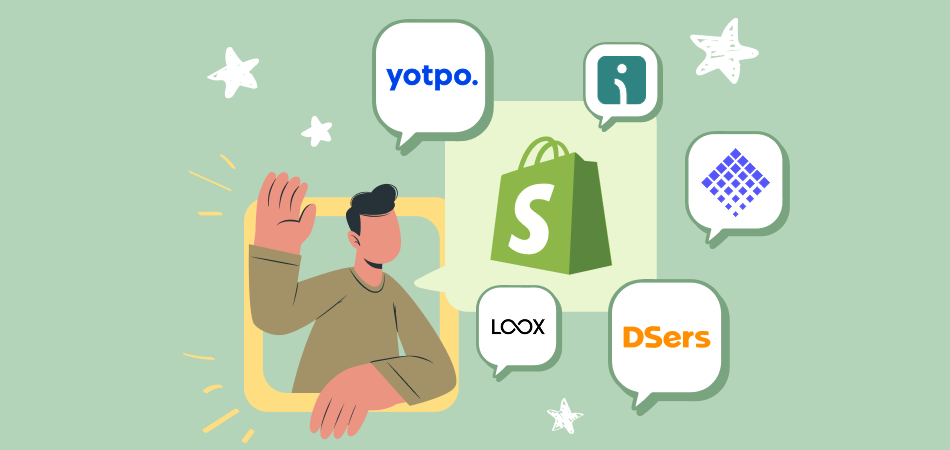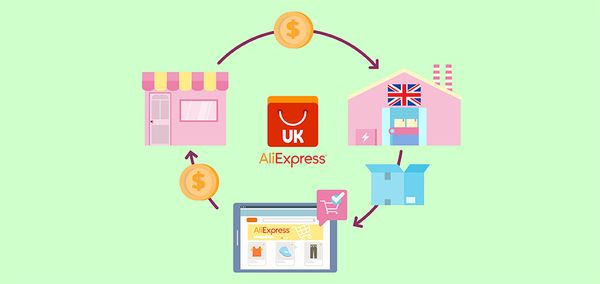15 Best Shopify Apps for E-commerce Brands in 2025

Whether you're just launching your online store or looking to scale operations in 2025, leveraging the best Shopify apps can significantly streamline your workflow, improve customer experience, and drive conversions.
To help you cut through the clutter, we’ve curated a list of the 15 best Shopify apps for e-commerce brands in 2025, ranging from dropshipping and SEO to customer loyalty and live chat support.
15 Best Shopify Apps for Brands
Shopify, one of the most powerful and flexible e-commerce platforms, supports this need through its vast ecosystem of apps. Let's check the 15 best Shopify apps that boost your dropshipping sales in 2025.
1. DSers
DSers is the official AliExpress dropshipping partner and one of the most trusted apps for automating your dropshipping operations.

It allows you to process hundreds of orders in seconds, manage multiple suppliers, and find cost-effective alternatives using the Supplier Optimizer feature.
Key Features:
- Bulk order processing
- Supplier optimization
- Real-time inventory sync
- Integration with AliExpress
DSers saves dropshippers hours each day by automating repetitive tasks and preventing inventory issues, making it ideal for high-volume stores.
2. Rebuy
Rebuy uses AI and machine learning to personalize the shopping experience for each visitor. It offers product recommendations, smart upsells, and automated cross-sells that dynamically adapt to customer behavior in real time.
Key Features:
- Smart product recommendations
- Dynamic upsells and cross-sells
- A/B testing for offers
- Integration with Shopify Checkout
Rebuy helps increase average order value (AOV) and conversion rates by showing customers the right products at the right time.

|
Place Orders to AliExpress In Seconds DSers Bulk Order - Place 100s of orders to AliExpress in a few seconds with a just few clicks |
3. Yotpo
Yotpo is an all-in-one marketing platform designed to build trust and increase engagement through user-generated content (UGC), reviews, ratings, and loyalty programs. It’s particularly powerful for brands with a strong social media presence.
Key Features:
- Review and rating collection
- Photo and video UGC display
- SMS and email marketing integrations
- Loyalty and referral program tools
Yotpo turns happy customers into brand advocates, helping you increase credibility and conversions through authentic content.
4. HubSpot CRM
HubSpot CRM for Shopify enables you to manage customer relationships seamlessly. It automatically syncs store data with your HubSpot account, allowing you to create targeted email campaigns, segment customers, and track buyer journeys.
Key Features:
- CRM and contact management
- Marketing automation workflows
- Sales pipeline tracking
- Customizable reporting dashboards
HubSpot CRM brings enterprise-level marketing tools to Shopify users, making it easier to engage and retain customers.
5. Plug in SEO
Search engine optimization is key for long-term success, and Plug in SEO helps you stay ahead by analyzing your store for common SEO issues. It provides actionable recommendations to improve search rankings and drive organic traffic.
Key Features:
- On-page SEO audits
- Broken link detection
- Meta tag optimization
- Schema markup support
This app is perfect for merchants who want to boost visibility without hiring an SEO expert. It simplifies optimization into manageable tasks.
6. OrderEdit
OrderEdit allows customers to modify their orders after checkout, before fulfillment begins. This can include changing quantities, sizes, colors, or even adding products, helping reduce cancellations and customer service requests.
Key Features:
- Post-purchase order editing
- Real-time sync with fulfillment apps
- Customer self-service portal
- Internal admin interface
It improves customer satisfaction by offering flexibility while saving time on manual edits for your support team.
7. Checkout Blocks
Checkout Blocks gives you full control over the Shopify Plus checkout experience, allowing you to insert custom widgets, upsells, trust badges, and dynamic offers tailored to each customer segment.
Key Features:
- Custom banners and upsells
- Checkout field modifications
- Customer-specific logic rules
- Full compatibility with Shopify Plus
It turns the checkout page into a powerful revenue tool while keeping the user experience seamless and personalized.
8. Pre‑order Now
Pre-Order Now lets you accept orders for out-of-stock or upcoming products, keeping your sales going even when inventory is limited. It’s ideal for brands launching new items or managing inventory delays.
Key Features:
- Easy pre-order setup
- Partial payment options
- Back-in-stock alerts
- Customizable buttons and messages
It reduces missed sales opportunities and helps gauge demand before restocking or launching new products.
9. LoyaltyLion
LoyaltyLion helps you build long-term relationships with your customers through a fully customizable loyalty and rewards program. It encourages repeat purchases and brand engagement with points, tiers, and referral systems.
Key Features:
- Points for purchases, reviews, and social shares
- VIP tiers and bonus point campaigns
- Referral program
- Integrations with email and SMS tools
LoyaltyLion boosts customer lifetime value (CLTV) and turns your best buyers into repeat customers and brand promoters.
10. Tidio Live Chat
Tidio combines live chat, chatbots, and customer messaging into one platform. It helps answer customer questions in real-time, guide them to purchase decisions, and even recover abandoned carts using automated chat flows.
Key Features:
- Live chat with real-time visitor monitoring
- AI-powered chatbots
- Cart recovery automation
- Multilingual support
Tidio makes customer support instant and scalable, improving the shopping experience and boosting conversions through personalized engagement.
11. LangShop AI
LangShop AI allows you to translate your Shopify store into multiple languages and currencies automatically. With AI-powered translation and localization, you can provide a seamless experience for global customers.
Key Features:
- Auto-translate content and metadata
- Currency converter
- Language-based redirect
- SEO optimization for international traffic
It removes barriers to international sales, making your store accessible and trustworthy to global audiences.
12. Hextom: Free Shipping Bar
Hextom’s Free Shipping Bar helps increase average cart value by displaying dynamic messages that encourage customers to add more items to qualify for free shipping.
Key Features:
- Customizable progress bar
- Geo-targeted messaging
- Animated designs and countdowns
- Integration with shipping settings
It taps into buyer psychology, motivating shoppers to spend more while enhancing the shopping experience.
13. Smile Loyalty and Rewards
Smile is one of the most popular apps for creating loyalty programs with ease. It lets you reward customers with points, VIP status, and referral bonuses—all with a user-friendly interface.
Key Features:
- Points-based loyalty program
- Referral and affiliate rewards
- Branded reward widgets
- Seamless email and POS integration
Smile makes loyalty program setup quick and easy for growing brands without sacrificing performance or customization.
14. Order Legend for Google Shopping
Order Legend helps automate product listing ads (PLAs) on Google Shopping. It takes care of setup, optimization, and bidding, making it easier for brands to gain visibility and drive traffic without a marketing team.
Key Features:
- Smart product feed generation
- Bid automation
- Google Merchant Center integration
- Performance tracking
It simplifies paid advertising and helps you reach high-intent customers on Google with minimal effort.
15. Sales Popup Autoketing
Sales Popup creates real-time notifications showing recent purchases, cart activity, and limited-time offers. These popups increase urgency, build trust, and drive conversions by creating a sense of popularity and demand.
Key Features:
- Real-time sales and activity popups
- Customizable design and messaging
- Geo-targeting
- Analytics dashboard
It leverages FOMO (fear of missing out) to build urgency and guide hesitant buyers toward checkout.
How to Choose the Best Shopify Apps
With thousands of Shopify apps available—ranging from free tools to robust paid solution. It’s easy to feel overwhelmed by the choices. Choosing the right apps isn’t just about grabbing whatever looks popular. It’s about understanding your business goals, store operations, and customer needs.
1. Focus on Your Store’s Immediate Needs and Growth Goals
The most important starting point is to understand what your store really needs right now and what will support its growth shortly.
Ask yourself: What are the biggest pain points in your current operations? Are you trying to recover more abandoned carts, improve SEO rankings, or automate customer service?
Or maybe you're just starting out and need foundational tools for shipping, reviews, or email marketing.
By identifying your priorities, you can avoid the common mistake of installing too many apps at once, many of which may not serve your current stage of business. Instead, seek out apps that directly support your current goals and solve actual problems.
For instance, if you want to increase repeat purchases, a loyalty program like Smile or LoyaltyLion may be more valuable than advanced upsell apps. Starting with one key objective at a time helps you measure impact clearly and avoid unnecessary complexity or expense.
2. Evaluate User Experience and Ease of Use
Once you’ve identified a potential app, dive into its user experience. A good Shopify app should be intuitive, well-documented, and easy to integrate into your store, even if you’re not technically inclined.

|
Manage Multiple Stores In One Account Multiple Stores Management - Link and manage multiple stores on different platforms in one place |
During your trial period or setup, pay attention to how smoothly the app fits into your dashboard, how easy it is to configure the features, and whether it offers guided onboarding or tutorials.
If you're constantly struggling to make the app work or need to contact support just to make basic changes, it might not be the right fit. The best apps not only add functionality but make your life easier, not more complicated.
3. Prioritize Compatibility and Integration
An app’s usefulness is amplified when it works well with your existing tech stack. Before installing any new tool, check whether it integrates smoothly with your Shopify theme, other active apps, or third-party services like your email marketing platform, CRM, or payment processor.
For example, if you’re already using Klaviyo for email campaigns, it makes sense to choose a loyalty app that integrates directly with Klaviyo’s automation flows. This ensures that your marketing remains consistent and efficient without having to jump between platforms or manually sync data.
Poor compatibility can lead to bugs, broken checkout flows, or site slowdowns—issues that can frustrate customers and affect your revenue. Always read the integration list on the app’s listing page and, if needed, reach out to support for clarification before installation.
4. Consider ROI Over Cost
It’s easy to get distracted by pricing—especially for newer stores watching every dollar. But the real value of an app isn’t just in how much it costs but how much it contributes to your business in return.
Some apps may come with a monthly fee, but if they help increase conversions, boost average order value, or reduce customer service workload, the cost is easily justified.
On the other hand, a free app that doesn't move the needle could be more expensive in the long run by eating up time or complicating your operations.

|
Adapt Your Product Prices Automatically DSers Automatic Pricing - Pre-set Pricing Rule to mark-up your product price automatically |
Where possible, test the app during a free trial or freemium phase. Monitor performance closely and determine whether the app is delivering measurable results. If it’s not contributing to growth, it might be time to uninstall it and explore other options.
Final Words
Choosing the best Shopify apps can elevate your e-commerce store from average to exceptional. The apps listed here represent some of the best in the Shopify ecosystem in 2025, proven to help businesses automate processes, improve customer experience, and drive more sales.
As your business grows, keep reassessing your tech stack. The right mix of apps can give you a real competitive edge, helping you save time, optimize performance, and unlock new revenue streams.
Now it’s your turn: explore, experiment, and find the perfect apps to power your brand’s success on Shopify.











 Company
Company
 Why Choose DSers
Why Choose DSers
 Blog
Blog
 Help Center
Help Center




 Live Chat
Live Chat